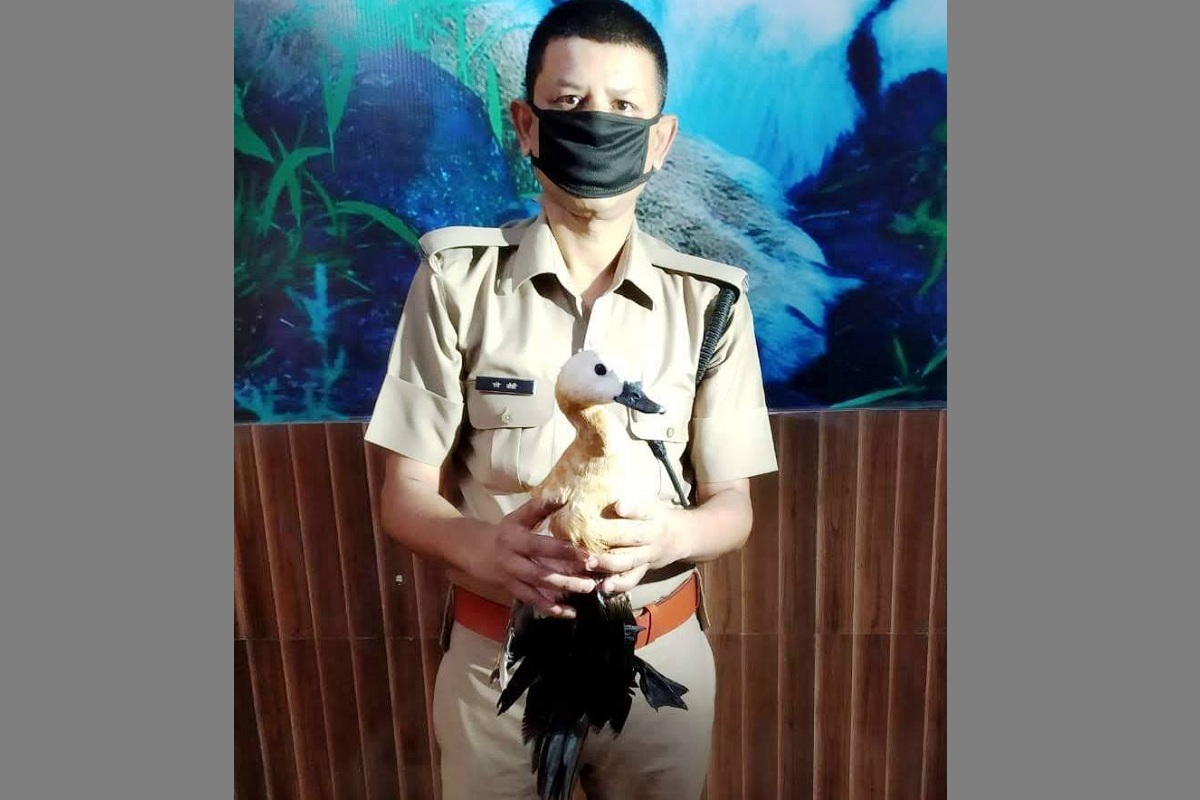Uttarakhand’s 8 special guests for Republic day parade
These special guests have been invited for republic day parade for their exemplary works in forest and wildlife conversation.
The suspense prevails as almost all the Ruddy Shelduck, who had migrated to Asan in winters last year, have departed for their habitat areas in central Asia as summer season began.

Releasing the migratory bird at Asan conservation reserve in Dehradun.
The recent recovery of an isolated migratory bird, Brahminy Duck, from a house in Dehradun has surprised bird experts. The incident is unusual as Brahminy ducks annually come at Asan conservation reserve and other water bodies in forest area, but not at city sites in the state capital, and abandon Uttarakhand as summer approaches. The Brahminy Duck or Ruddy Shelduck was rescued from a house by a forest department team on 8 May.
In a dramatic incident, the city rescue team of the forest department reached Vijay Colony and save the migratory bird. The duck had entered a house. The migratory duck was later released at Asan Conservation reserve, 40 km from Dehradun. The suspense prevails as almost all the Ruddy Shelduck, who had migrated to Asan in winters last year, have departed for their habitat areas in central Asia as summer season began.
Advertisement
City rescue team’s leader Ravi Joshi says, “The bird was rescued from a crowded colony, in a dry locality where no water body exists. After consulting with the top brass of the forest department, the migratory bird was released at Asan. But, the find was surprising as not many have seen Ruddy Shelduck ever in Dehradun city area.”
Advertisement
The arrival of migratory birds begins at Asan, located on the Dehradun-Poanta Sahib highway, by the end of October and the winged guest start departing from February end onwards. Travelling all the way from central Asia, the migratory birds make Asan their home for four-five months.
Asan conservation reserve range office Rajendra Hingwal says, “By March-April all the Ruddy Shelduck make their return journey. Even this time all the migratory bird left Asan by their routine time and only those birds, which remain in the lake area around the year, are there.”
Over two dozen species of water birds-including little cormorant, little egret, Indian spot-billed duck, etc.- remain permanently at Asan. Earlier this year bird census was conducted at Asan, and low attendance of Ruddy Shelduck was registered. Annually about 1000 to 1500 Brahminy Duck used to migrate to the man-made wetland of Asan. But, this time only 432 Ruddy Shelducks came.
Pradeep Saxena, bird expert working with Chakrata forest division, says, “Only in rare cases Brahminy Duck will stay during summer at Asan. I saw a pair of the migratory birds staying there twice.”
So, stray cases of Brahminy Duck stay in summer exits in Dehradun. How the rescued migratory bird will manage to dwell in the conservation reserve with no fellow species around and scorching heat? Will the bird fly back to join friends on the return journey? Speculations prevail over the lone Brahminy Duck (possibly) at Asan conservation reserve.
Advertisement